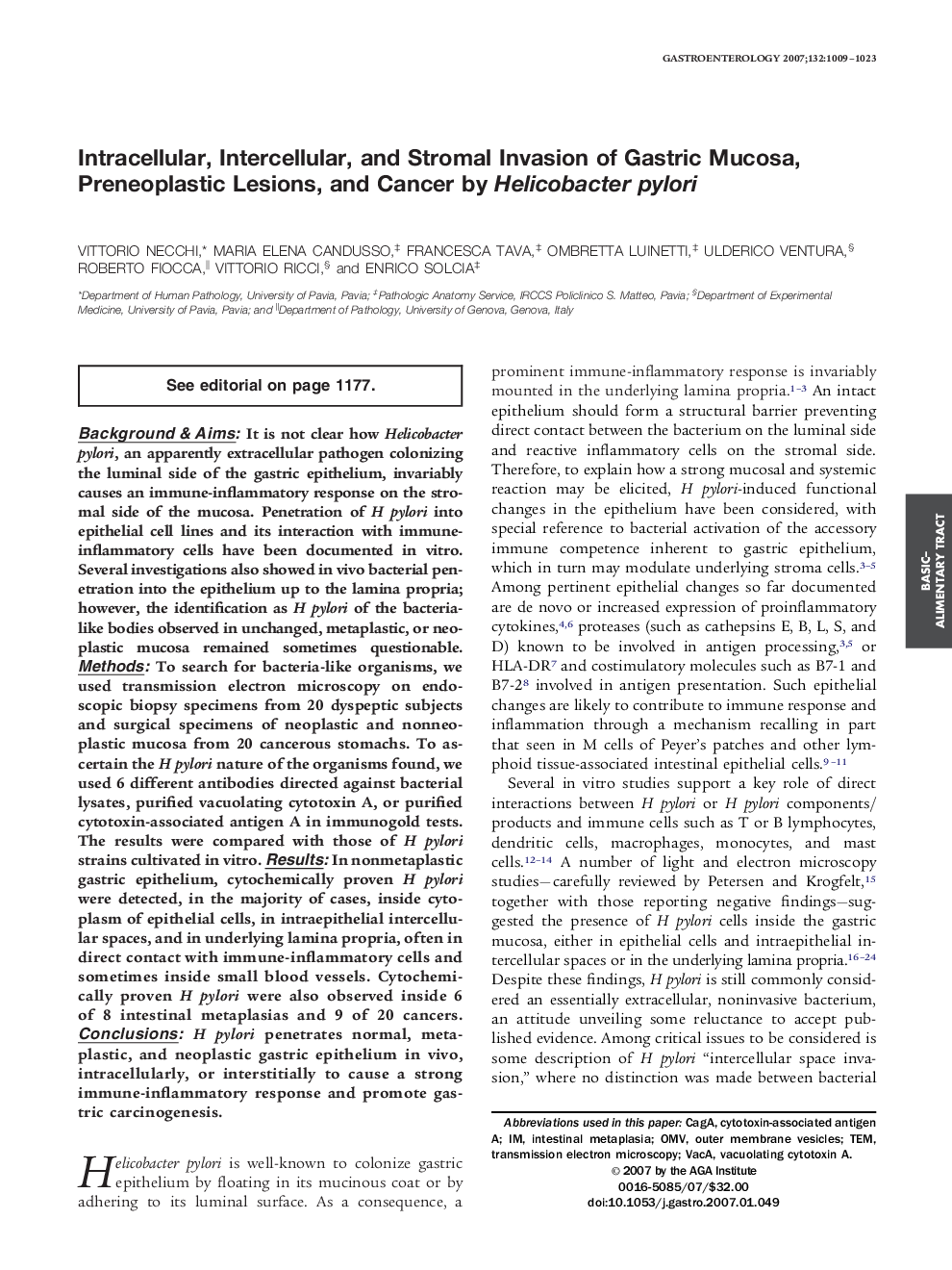| Article ID | Journal | Published Year | Pages | File Type |
|---|---|---|---|---|
| 3299389 | Gastroenterology | 2007 | 15 Pages |
Abstract
Background & Aims: It is not clear how Helicobacter pylori, an apparently extracellular pathogen colonizing the luminal side of the gastric epithelium, invariably causes an immune-inflammatory response on the stromal side of the mucosa. Penetration of H pylori into epithelial cell lines and its interaction with immune-inflammatory cells have been documented in vitro. Several investigations also showed in vivo bacterial penetration into the epithelium up to the lamina propria; however, the identification as H pylori of the bacteria-like bodies observed in unchanged, metaplastic, or neoplastic mucosa remained sometimes questionable. Methods: To search for bacteria-like organisms, we used transmission electron microscopy on endoscopic biopsy specimens from 20 dyspeptic subjects and surgical specimens of neoplastic and nonneoplastic mucosa from 20 cancerous stomachs. To ascertain the H pylori nature of the organisms found, we used 6 different antibodies directed against bacterial lysates, purified vacuolating cytotoxin A, or purified cytotoxin-associated antigen A in immunogold tests. The results were compared with those of H pylori strains cultivated in vitro. Results: In nonmetaplastic gastric epithelium, cytochemically proven H pylori were detected, in the majority of cases, inside cytoplasm of epithelial cells, in intraepithelial intercellular spaces, and in underlying lamina propria, often in direct contact with immune-inflammatory cells and sometimes inside small blood vessels. Cytochemically proven H pylori were also observed inside 6 of 8 intestinal metaplasias and 9 of 20 cancers. Conclusions: H pylori penetrates normal, metaplastic, and neoplastic gastric epithelium in vivo, intracellularly, or interstitially to cause a strong immune-inflammatory response and promote gastric carcinogenesis.
Keywords
Related Topics
Health Sciences
Medicine and Dentistry
Gastroenterology
Authors
Vittorio Necchi, Maria Elena Candusso, Francesca Tava, Ombretta Luinetti, Ulderico Ventura, Roberto Fiocca, Vittorio Ricci, Enrico Solcia,
